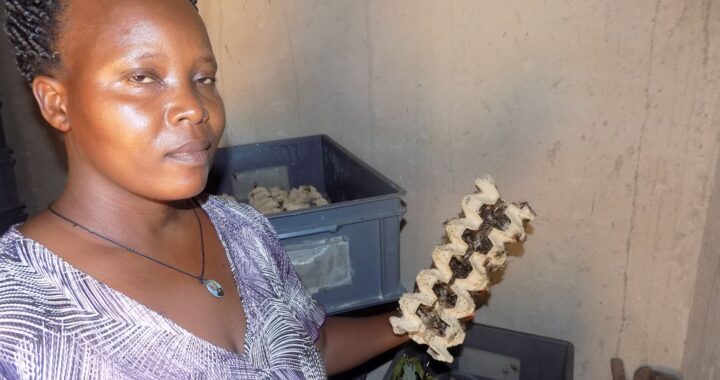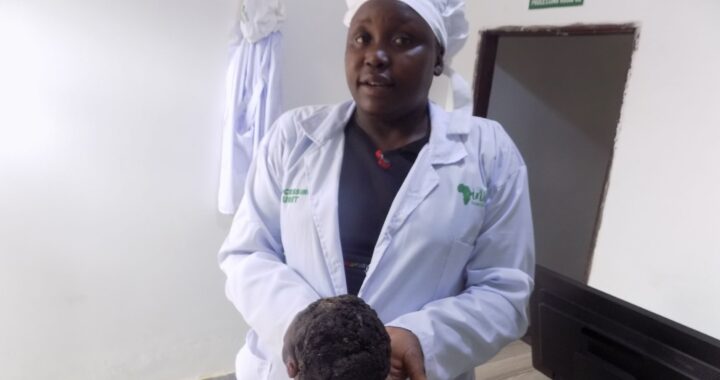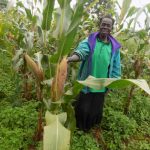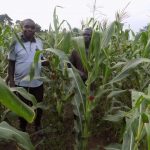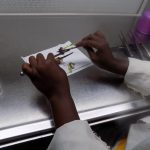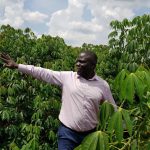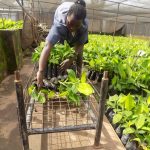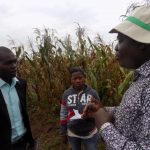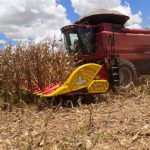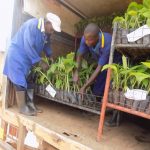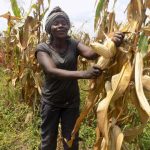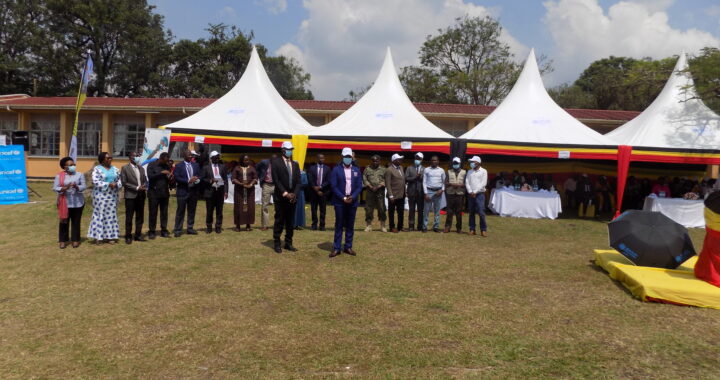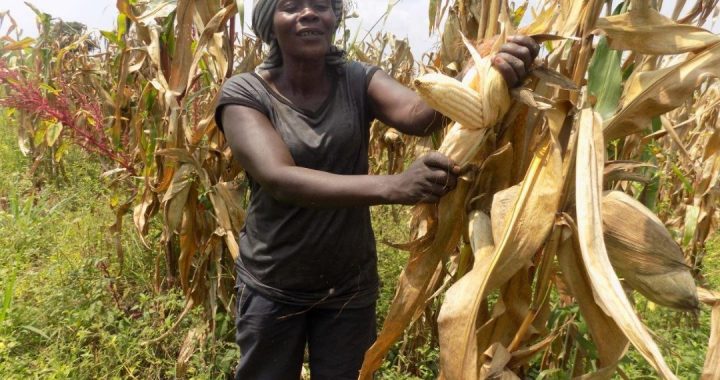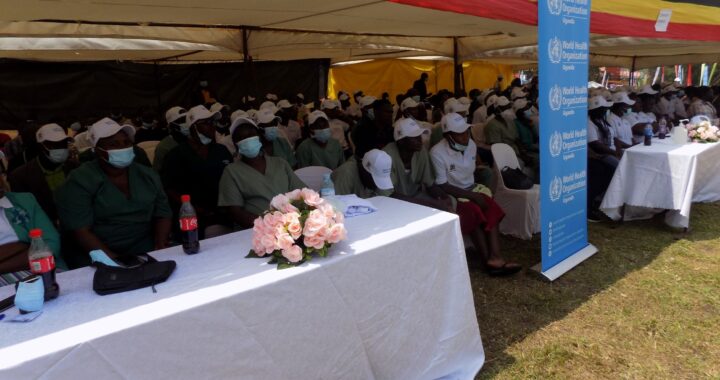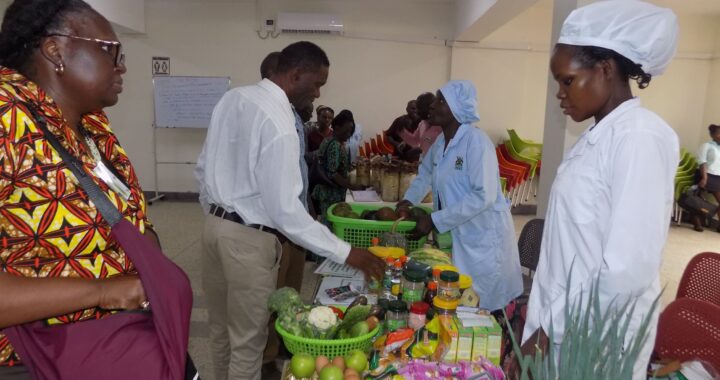We can produce much of our wheat needs
6 min read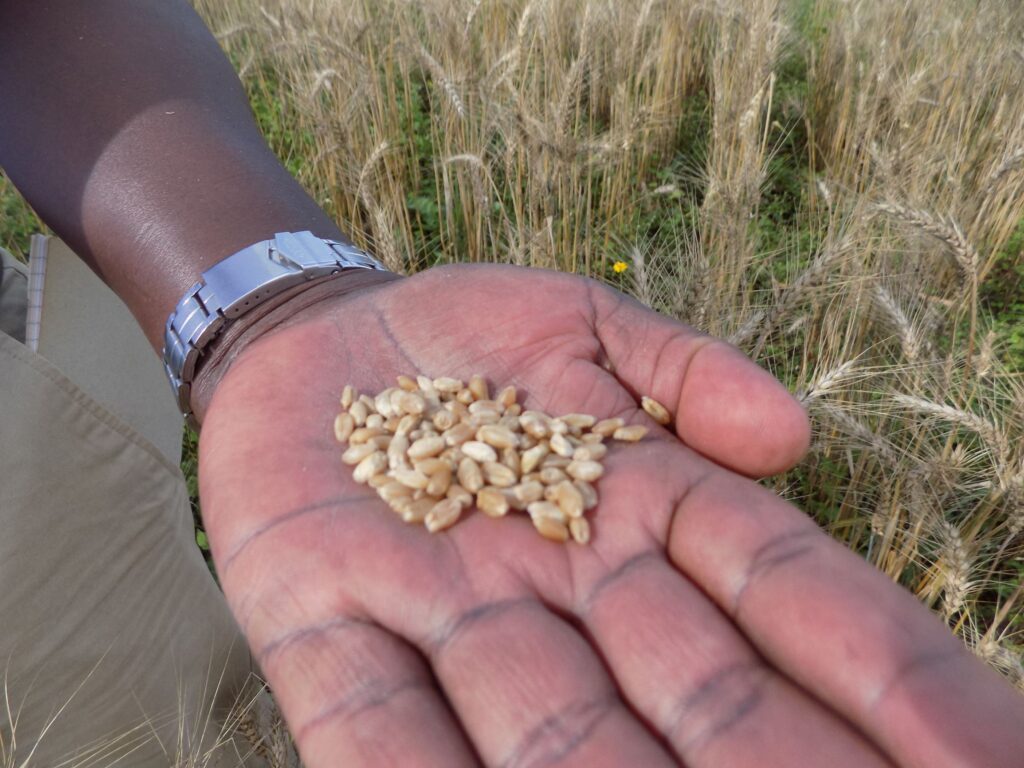
A wheat breeder shows off wheat grains in a field. Photo; By Christopher Bendana
By Christopher Bendana
Bulambuli
Wheat is one of the world’s major cereals. The others being maize and rice. Uganda imports much of its wheat like many countries in the region mainly from Argentina, Australia and Ukraine.
Statistics from the United States Department of Agriculture that tracks global agricultural productivity reveals stagnation of Uganda’s wheat production with imports increasing over years. The country production has stagnated an annually production of 25,000 MT including for 23/24 while consumption is increasing and is projected at 621,000MT for 23/24.
Wheat is praised by the urbanite because of its ability to be prepared fast.
Yasin, chapati maker in Kyaliwajjala in Kampala predicts a continuous growth in wheat consumption.
“I used to bake 10 packets of 2kg of wheat a day, now it is a carton,” he says.
It should be noted that the average wheat consumption in sub-Saharan Africa (SSA) is 30 kg per year, compared to 200kg per year in North Africa according to a study, Wheat production and breeding in Sub-Saharan Africa, Challenges and Opportunities in the Face of Climate Change Wuletaw Tadesse, Zewdie Bishaw and Solomon Assefa International Center for Agricultural Research in the Dry Areas (2018).
Researchers say there is potential to expand wheat production into the non-traditional wheat areas by applying improved crop varieties, and better agronomic management practices.
They call for favorable policies to enable the availability and accessibility of inputs, extension services, transportation and marketing infrastructures.
Now the National Agricultural Research Organization (NARO) is coming in to close the gap through developing varieties that are adapted to the Ugandan environment.
And indeed there is evidence of NARO ability to increase production and productivity of key crops like rice, and maize.
Otherwise, the first interventions that go back to the early 2000s were geared to developing wheat varieties adapted to the highlands of Sebei and Bugisu in eastern Uganda and the Kigezi highlands in southwestern Uganda.
This was usually by testing for ecological stability of varieties developed by the International Center for Improvement of Maize and Wheat (CIMMYT) and International Center for Agricultural Research in the Dry Areas (ICARDA)
However, the national wheat improvement program of NARO housed in Buginyanya Zonal Agricultural Research and Development Institute (BugiZARDI) has now shifted the focus on developing varieties adapted to wider agro ecological zones stretching from the highlands to the lowland environments. They are generating climate adapted wheat varieties from crosses between varieties from CIMMYT and ICARDA with the local and the emphasis is now on the mid-lands and lowlands.
“The lowlands provide an opportunity for large-scale mechanized and commercial wheat production,” says Bosco Chemayek, a wheat research scientist at BugiZARDI, a NARO eastern Uganda region research hub.
Chemayek is no stranger to wheat. He is a wheat boy, a native of Kapochorwa district. He grew up seeing the opportunities wheat provided to the Sebei people as well as the challenges. He understands the culture, the soils as well as the environment. Hence, he wanted to be part of the solution.
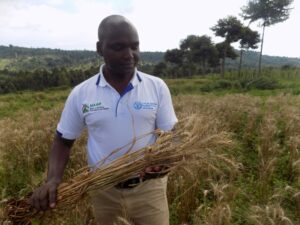
He studied agriculture at Makerere University. To achieve his dream, he chose BugiZARDI over other zonal institutes where he is focusing on wheat research close to the farmers.
He did his masters in crop science also at Makerere University and a doctorate in plant breeding at the Plant Breeding Institute, University of Sydney, in Australia to get a well-grounded theory and academic knowledge on wheat research.
However, his breakthrough in wheat research for development came in 2021 when the Uganda National Council for Science Technology (UNCST) made a call for funding of local research with direct bearing on industry. The funding was from the International Development Research Center (IDRC) of Canada, within the auspices of the Science Granting Councils Initiative (SGCI).
He applied and won a grant for, increasing wheat production and productivity through science based knowledge and Innovation for a competitive wheat manufacturing value chain in Uganda.
They have since evaluated and tested different improved varieties in Uganda’s six wheat ecological areas.
For the mid-highlands evaluations were done in Bukwo and Kween in eastern Uganda, Rwebitaba in western Uganda, Bulengeru. Here the productivity is 2tons/ ha
For the lowlands, it was in Ngenga and Ikulwe in the Karamoja region. Here the productivity is 1.8tons/ha
They have developed two new candidate varieties of wheat from the ten he started with that can grow well both in highland and non-highland parts of Uganda. These varieties, if formally released and popularized, will enable cultivation of wheat in previously unsuitable areas, which make up over 90% of the country.
“The target is to expand wheat growing in non-traditional wheat growing mid and lowland areas like Karamoja that are 1000masl” he boasts.
Geoffery Sempiri, the coordinator Science Granting Councils Initiative at UNSCT, the funders of Chemayek’s research says they got interested in wheat after releasing changing eating habits of Ugandans especially those in urban areas to wheat byproducts especially bread, biscuits, cookies, and chapati
“We funded this research project with a focus on increasing wheat production and productivity to reduce on its import,” he says.
“The research project supports the National Development Plan three’s objectives of promoting economic growth, reducing poverty, and improving livelihoods through Agro based industrialization.”
Wheat farming in eastern Uganda
Nelson Kusuro, a second generation wheat farmer in Bukwo, eastern Uganda with nostalgia about wheat farming in the family, and the learning experience from the Kenyans.
“It helped me educate my children,” he reveals.
However, Kusuro did not plant wheat this season as the weather has affected wheat production in the area, though he is still in barley as there is market from the beer breweries.
“The weather is unpredictable,” he said by phone on Wednesday.
“While we would harvest an average of 14 bags of 50kg a season from an acre, production do now days go low up to eight bags an acre in a season,” he explained.
He says more needs to be done to motivate farmers to remain in wheat growing. He calls for incentives for farmers and provision of inputs like what Uganda Grain Milling Company used to do.
If you came to Bukwo you would see the old combine harvesters,” he boasts.
He calls for testing of the oils and provision of improved seeds, and extension services.
Challenges, research from elsewhere
In their study, Tadesse, and his colleagues argue that the explosive population growth has led to increased urbanization and change in food preferences resulting in the demand for wheat and its byproduct in sub Saharan Africa.
Their study reveals that the block imported 16.9 MT wheat of about USD 6 billion between 2011-2013, and it projects imports to reach 76.5MT in 2025, of which 48.3MT would be imported.
Their proposition on the current trends in the block points to the growing populations, increased rural-urban migration, low public and private investments, weak extension systems, inappropriate agricultural policies, and low adoption rates of new technologies.
They call for the development of an effective seed system, and better agronomy practices including the use of irrigation
Currently, Egypt with 9.7MT is the leading wheat producer on the continent, Ethiopia is second with 7MT. This is according to Food Agriculture Organization of the United Nations 2022 statistics.
The continent’s total wheat production for 2023 was 28MT.
You can support this independent journalism by contacting the editor at cbendana@sciencenowmag.com
ScienceNowMag would like to send one journalist to report from COP 29 as climate change is one of our area of interest. You can be a sponsor
